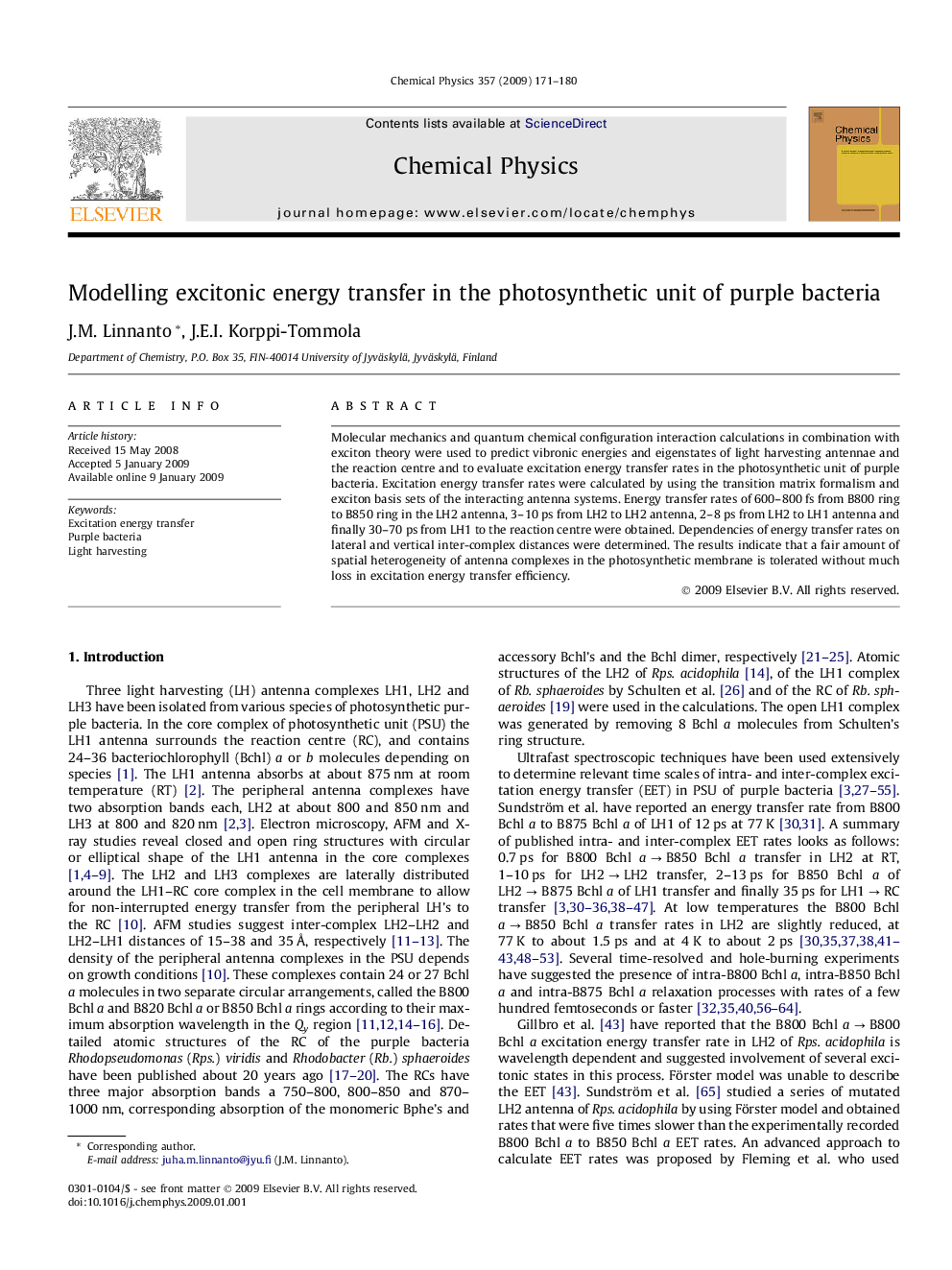| Article ID | Journal | Published Year | Pages | File Type |
|---|---|---|---|---|
| 5375679 | Chemical Physics | 2009 | 10 Pages |
Abstract
Molecular mechanics and quantum chemical configuration interaction calculations in combination with exciton theory were used to predict vibronic energies and eigenstates of light harvesting antennae and the reaction centre and to evaluate excitation energy transfer rates in the photosynthetic unit of purple bacteria. Excitation energy transfer rates were calculated by using the transition matrix formalism and exciton basis sets of the interacting antenna systems. Energy transfer rates of 600-800Â fs from B800 ring to B850 ring in the LH2 antenna, 3-10Â ps from LH2 to LH2 antenna, 2-8Â ps from LH2 to LH1 antenna and finally 30-70Â ps from LH1 to the reaction centre were obtained. Dependencies of energy transfer rates on lateral and vertical inter-complex distances were determined. The results indicate that a fair amount of spatial heterogeneity of antenna complexes in the photosynthetic membrane is tolerated without much loss in excitation energy transfer efficiency.
Related Topics
Physical Sciences and Engineering
Chemistry
Physical and Theoretical Chemistry
Authors
J.M. Linnanto, J.E.I. Korppi-Tommola,
